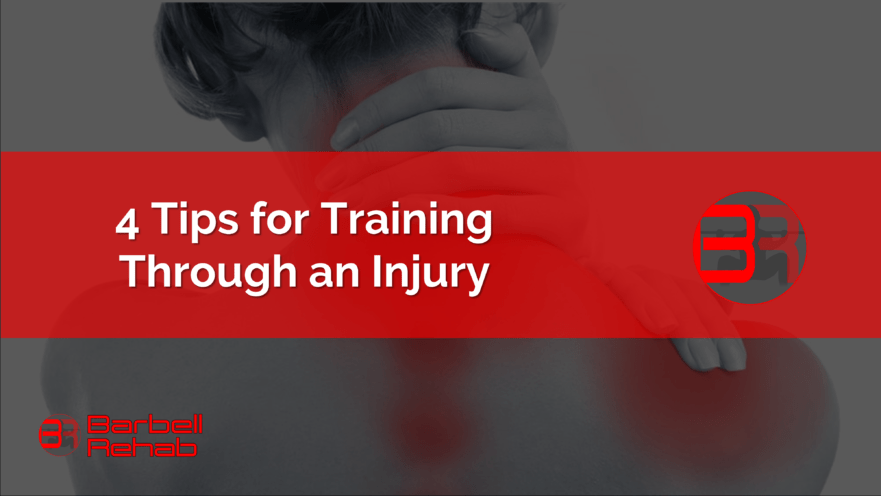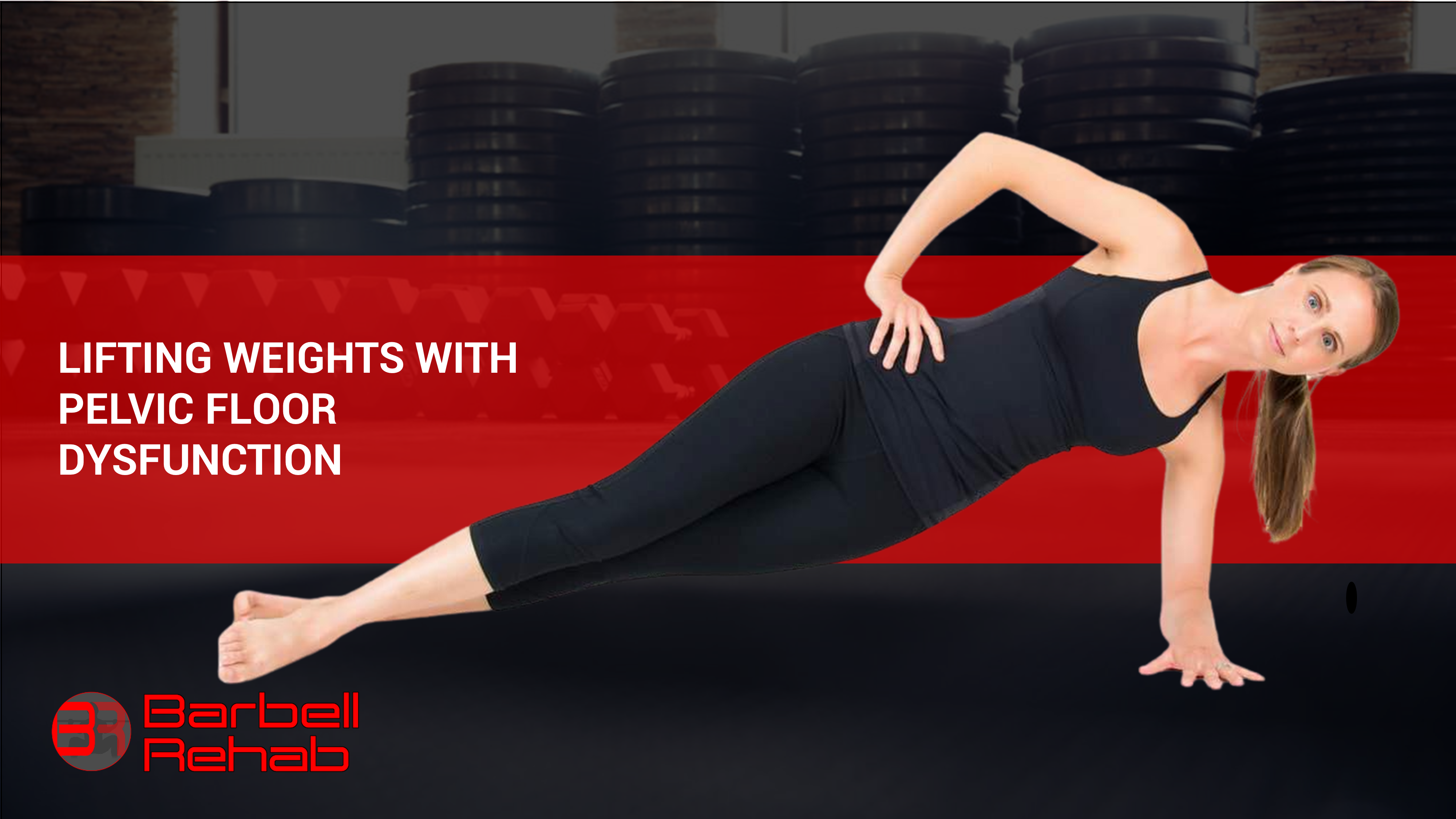So it happened...you injured yourself. Whether you strained your back on your last set of deadlifts, or tweaked your shoulder on the bench press, injuries can be both frustrating and scary. We understand this, and are here to help! While everyone’s injury situation is unique, here is a guideline that will help set you on the right path to recovery!
Tip 1: Stay Moving...It’s Going to be Alright!
Our first recommendation when it comes to overcoming a new injury such as a back or shoulder strain...is to keep moving! While a pint of ice cream, a bottle of wine, and a good movie from time to time never hurt anyone, it’s important to stay active!
While we encourage you to stay active, just any kind of movement isn’t going to cut it. This is the time to find movements that you can tolerate and do them a lot! Does it hurt to bend forward, that’s ok...just temporarily avoid that and bend backwards! For more information on overcoming a back injury, check the link here. Does it hurt to reach overhead or reach behind your back? That’s ok too, just temporarily avoid that as well!
With strains and tweaks, it’s important in the early phases to get as much healthy, tolerable movement you can. This is not the time to try and push through and force motions that hurt!
Often times the big mistake we see with a lot of people is trying to stretch and mobilize into painful movements. While this may be a good strategy later on in the rehab process, it often backfires in the initial stages. ‘
Trying to stretch into a recent strain is like putting your fingers into a Chinese finger trap. The affected area is most likely in a state of spasm, and if you try and stretch it out, it’s only going to make it grab harder! You may feel “locked up” and unable to move in certain directions, and that’s ok. Just do what you can!
Tip 2: Continue Training Other Lifts
Straining one part of your body doesn’t mean you have to miss your next training session. When it comes to situations like these, we usually encounter two types of people: Those that skip the gym completely and those that proceed forward with their usual workout and push through the pain. As always, the optimal solution usually lies somewhere in the middle.
After an acute injury, we recommend that you get your butt in the gym and do what you can! It’s important from both a mental and physical standpoint to both get this session in. This will limit any detraining effects and if done correctly, most often you will physically feel BETTER after!
While this workout should be modified based on the injury at hand, don’t be scared to continue your current programming for non-affected body parts! For example, shoulder strains from the bench press usually don’t affect your ability to deadlift. And many knee strains from squats don’t affect your ability to bench or overhead press!
Tip 3: Modify the Movement That Caused the Injury
So now that you know that you should continue to train your unaffected lifts, what should you do about the lift that actually caused the injury? While there are many variables that will affect your unique situation, here are some general guidelines.
Decrease the load of the lift. Did you hurt yourself squatting on Monday and your next squat session is programmed for Wednesday? If it doesn’t hurt, try decreasing the load by 20-30% and keep the rep scheme. This can help show your body that the squat is in fact not as “dangerous” as it thinks it is and can also limit deconditioning
Decrease the ROM of the lift. Sometimes it hurts to even perform the lift with an empty barbell. In this case, we recommend decreasing the ROM of the lift. For bench presses this includes variations like pin presses and floor presses. For deadlifts, this could include block pulls or rack pulls.
Skip the Lift for a Few Workouts. Sometimes after sustaining an injury on a lift, it may take some time for the body to calm down. In situations like these, you may need to hold on the aggravating exercise. Don’t worry...everything is going to be ok! Missing a few deadlift or squat sessions isn’t going to set you back tremendously in the long run!
Tip 4: Don’t Panic and Continue Your Leisure Activities!
It's just a strain! Keep calm. This is not the time to cancel your plans for the evening. Go bowling with your friends. Go on that hike you had planned. It’s more important to do the things you enjoy, with a little bit of pain than to completely avoid them all together!
This is not the time to stay home and focus on how “injured” you are. This isn’t the time to continually test your painful movements to see if they are still painful. You don’t need to continually mash, poke, prod, crack, pop, manipulate, and roll out your injury...it just happened...leave it alone!
The more attention you give it in the phase, the more you will be aware of it, and the more it can linger around!
Avoid Dependence on the Healthcare System
While there are certainly situations where you would require immediate medical attention for injuries such as a concern for fracture, loss of bowel/bladder, numbness on your inner thighs, just be aware of who you go see!
Many physicians don’t understand barbell training, and are still unfortunately prescribing muscle relaxers and bed rest. This can also lead to unnecessary expensive medical imaging which may even find “problems” that aren’t even real issues!
Here’s the truth. 90% of back pain resolves on its own regardless of treatment in about 6 weeks (1). In my opinion, one aspect that can unfortunately prolong this period is less-than-optimal medical care. There are still providers out there pushing for surgery on “issues” that we find on many people that don’t even have pain!
Did you know that around 80% of 50 year olds have some kind of “disc degeneration” in their spine? 30% of 20 year olds even have “disc bulges”! (2)
Here’s what we see happen all too often unfortunately. You hurt your back deadlifting, so you go to the emergency room. They take x-rays, find no fractures, and then tell you that you may have osteophytes (bony fragments) and degenerative disc disease! Oh no! You’re then sent to physical therapy where you could be told a whole slew of things like your bones are out of place or you have an unstable core. You then end up leaving feeling more damaged and fragile than you went in.
This is a model that creates dependence on the healthcare system. At Barbell Rehab, I do things a little differently.
So next time you’re injured...
At Barbell Rehab, my goal is to help you overcome your injuries in a safe and efficient manner. Often times these acute injuries are poorly mismanaged by general practitioners who don’t understand YOUR unique needs as a barbell athlete. We don’t tell you your weak and unstable, we empower you and help you reach your goals!
If injury happens to creep in, don’t panic. We help you every step of the way and get you back to your high level barbell activities that your family doctor says are bad for you! So keep calm,stay moving, continue training to your tolerance, and try your best to enjoy the other aspects of your life!
References
Van tulder M, Becker A, Bekkering T, et al. Chapter 3. European guidelines for the management of acute nonspecific low back pain in primary care. Eur Spine J. 2006;15 Suppl 2:S169-91.
Brinjikji W, Luetmer PH, Comstock B, et al. Systematic literature review of imaging features of spinal degeneration in asymptomatic populations. AJNR Am J Neuroradiol. 2015;36(4):811-6.





